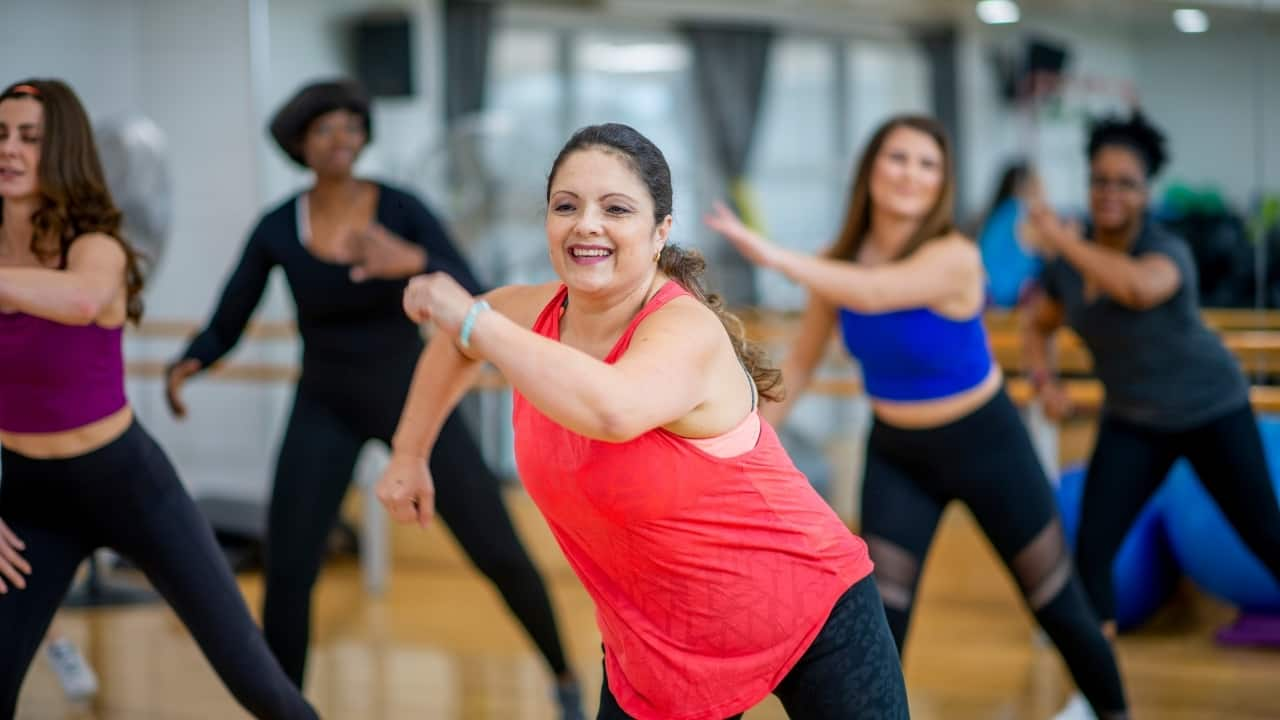Best exercises during menopause: Prevent mood swings, manage weight and more with these 8 workouts
Women's health: Menopause brings significant hormonal changes that can lead to various physical and emotional symptoms, including weight gain, decreased bone density, hot flashes, and mood swings. Incorporating these exercises into a regular fitness routine can help women manage menopause symptoms and stay healthy and active during this transitional phase.
1/9

Menopause brings significant hormonal changes that can lead to various physical and emotional symptoms, including weight gain, decreased bone density, hot flashes, and mood swings. Regular exercise during menopause plays a vital role in managing these symptoms and improving overall well-being. Exercise can help reduce the risk of osteoporosis, maintain a healthy weight, improve cardiovascular health, and enhance mood by releasing endorphins. It also supports joint flexibility, muscle strength, and balance, all of which become more important as women age. By incorporating a consistent fitness routine, women going through menopause can experience improved energy levels, better sleep, and reduced stress, making the transition smoother. Dr Madhu Sharma, gynaecologist and obstetrician at Mothercare Health in Surat, discusses certain exercises that work best during menopause. Here are 8 exercises that can help. (Image: Canva)
2/9

Walking: Walking is a low-impact, accessible form of exercise that improves cardiovascular health, boosts metabolism, and promotes mental well-being. It's especially helpful for weight management, which can become challenging during menopause. Walking for 30 minutes daily can reduce the risk of heart disease and osteoporosis while alleviating stress and mood swings associated with hormonal changes. (Image: Canva)
3/9

Strength training: Strength training with weights or resistance bands is crucial during menopause as it helps combat muscle loss and maintain bone density, reducing the risk of osteoporosis. By improving muscle mass and metabolism, it supports weight management. Aim for two to three sessions per week focussing on different muscle groups for optimal health benefits. (Image: Canva)
4/9

Yoga: Yoga combines physical postures, breathing exercises, and mindfulness, helping women during menopause relieve stress and promote relaxation. Its gentle movements improve flexibility, balance, and joint mobility. Yoga can also help reduce hot flashes, anxiety, and mood swings. Practices like restorative yoga are particularly beneficial for easing menopause-related discomforts. (Image: Canva)
5/9

Swimming: Swimming offers a full-body workout that's easy on the joints, making it ideal for women experiencing menopause. It strengthens muscles, improves cardiovascular health, and enhances flexibility without putting stress on bones or joints. Swimming also helps manage weight, improves mood, and promotes overall fitness, reducing the risk of heart disease and other menopause-related issues. (Image: Canva)
6/9

Pilates: Pilates focusses on core strength, posture, and controlled movements, which can help relieve back pain and improve balance, both of which may be affected during menopause. By increasing flexibility and muscle tone, Pilates helps maintain strength and mobility. Regular practice can also improve mental focus and alleviate stress. (Image: Canva)
7/9

Cycling: Cycling, whether outdoors or on a stationary bike, is a great cardiovascular workout that helps control weight and enhance endurance. It strengthens leg muscles, promotes joint flexibility, and boosts heart health. Cycling also releases endorphins, reducing stress and improving mood, which can be especially beneficial during the hormonal fluctuations of menopause. (Image: Canva)
8/9

Dancing: Dancing is a fun, aerobic activity that promotes coordination, balance, and cardiovascular health. It helps manage weight and improves mental well-being by reducing stress and anxiety. Dancing also keeps muscles and joints flexible and boosts endorphin levels, which can elevate mood and combat menopause-related mood swings. (Image: Canva)
9/9

Stretching: Stretching exercises maintain flexibility, ease muscle tension, and improve joint mobility, which often decreases with age. During menopause, regular stretching helps reduce stiffness, improve posture, and prevent injury. Incorporating a stretching routine into daily life enhances overall physical comfort, making other activities more enjoyable and promoting long-term mobility. (Image: Canva)
Disclaimer: This article, including health and fitness advice, only provides generic information. Don’t treat it as a substitute for qualified medical opinion. Always consult a specialist for specific health diagnosis.
Disclaimer: This article, including health and fitness advice, only provides generic information. Don’t treat it as a substitute for qualified medical opinion. Always consult a specialist for specific health diagnosis.
Discover the latest Business News, Budget 2025 News, Sensex, and Nifty updates. Obtain Personal Finance insights, tax queries, and expert opinions on Moneycontrol or download the Moneycontrol App to stay updated!






